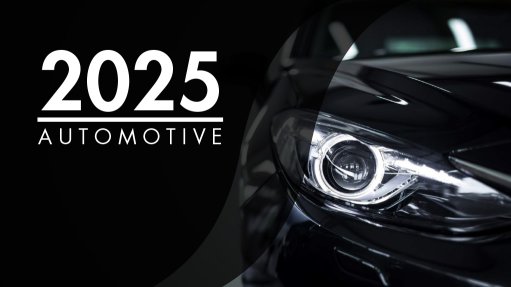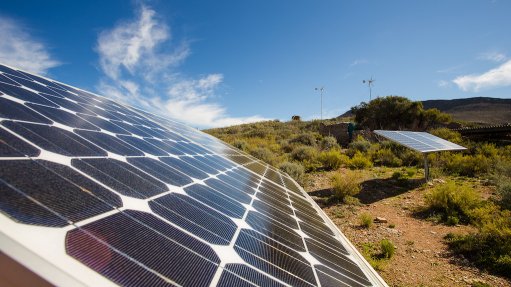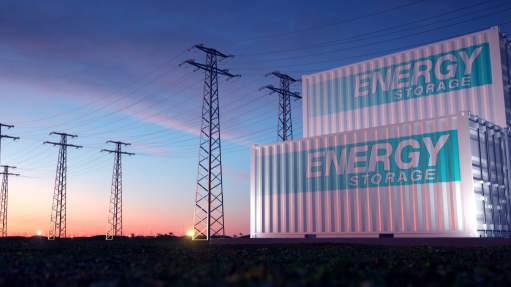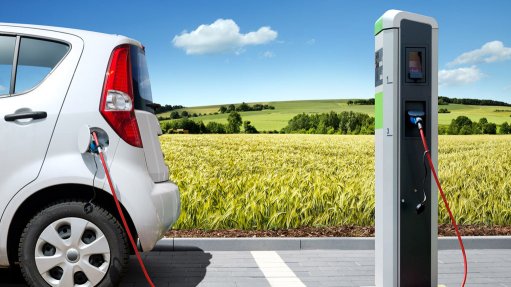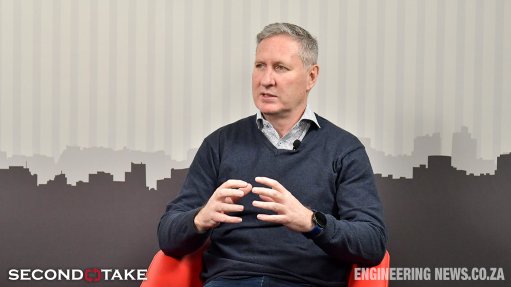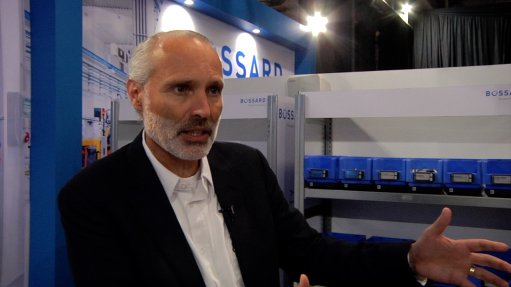As EV adoption turbo charges, is our grid ready?
This article has been supplied and will be available for a limited time only on this website.
Dr: Patrick Narbel - Chief Technology Officer at GoSolr
South Africa’s energy and mobility sectors are colliding in transformative ways. Electric vehicles (EVs) have become more accessible, and CleanTechnica reported that local EV sales have grown by 35% from 2023 to 2024. Yet, this exciting growth is marred by a familiar challenge: the country’s fragile, overburdened national electricity grid.
Can our electricity system support this electrified future? Not without help. The answer lies in not just expanding capacity, but in rethinking it entirely. South Africa’s National Development Plan 2030 aims to have an energy sector that promotes economic growth, job creation, and environmental sustainability through a diversified energy mix. In this light, solar energy isn’t just an alternative; it’s fast becoming central to the country’s energy transformation strategy. As such, increasingly, it is emerging not as a backup but as a viable solution to South Africa’s energy future.
Our grid – a system under strain
Our national grid is under extraordinary pressure and our energy crisis is well documented. Decades of underinvestment, reliance on coal, deep-seated corruption, and maintenance backlogs have left the nation vulnerable to widespread load shedding, load reduction, unexpected power outages and system inefficiencies. This has had a ripple effect across industries, with energy insecurity becoming a significant barrier to economic competitiveness. According to Stats SA, the country is grappling with an electricity availability that struggles to improve and raising concerns over energy reliability and economic stability. Figures show a 2.5% decline in electricity generation in early 2025 alone, providing a snapshot of the broader systemic strain.
Globally, EV sales are expected to exceed 20 million this year. This figure is up 35% year-on-year, according to the new edition of the IEA’s annual Global EV Outlook, and is being fueled by government incentives, manufacturing innovation, and falling battery prices. Locally, the potential is equally promising, with the government’s draft Electric Vehicles White Paper providing a foundation for EV industrialisation and infrastructure development. It outlines investment goals and policy frameworks designed to position South Africa as an EV manufacturing hub. However, it also acknowledges the risk of further grid instability without new approaches to energy generation and distribution.
EVs demand electricity. Experiences from other countries show that users tend to charge their vehicles at home and work, reserving the use of fast charging stations for long-distance travel. At home, a user will be able to charge a vehicle from a standard plug, which will take 6 to 10 hours to charge the vehicle from empty to full, depending on the model. A user can upgrade and put a dedicated EV charger that will typically draw 3,7 to 11 kW. For comparison, charging your car with an 11 kW charger will greatly reduce the time it takes to fully charge your car, but that will be equivalent to running 11 swimming pool pumps at the same time.
It’s easy to jump to alarmist conclusions. Imagine 100,000 EVs being plugged in as their owners arrive home from work - that’s 100,000 x 11 kW, or 1.1 GW added to the evening peak. For Eskom, this means ramping up power plants faster (far from ideal) and dealing with higher peaks. Existing substations would also come under added strain. It doesn’t take much imagination for this kind of narrative to hit the headlines with dramatic titles like “EVs will collapse SA's electricity infrastructure” and worse.
But is it true?
Although this scenario is possible, it doesn't have to play out that way. Not all EVs will charge at the same time. After all, we don’t fill up with petrol every day, so why assume we’ll charge EVs daily? Plus, while EVs are relatively new in South Africa, the technology itself is mature and comes with built-in flexibility.
The real need is a full battery before the next trip and not immediately upon arriving home. Most vehicles are parked for over 20 hours a day, offering ample time to shift charging to off-peak hours when the national grid capacity is underutilised.
This shift doesn’t increase peak demand; it helps flatten it. By boosting off-peak usage, we can make better use of existing infrastructure and spread fixed costs over more kilowatt-hours, ultimately reducing the unit cost of electricity.
Smart tariffs are key to encouraging this behaviour. Time-of-use pricing with higher rates during peak hours and lower rates off-peak can nudge EV owners to charge when it’s most efficient and affordable. (In short: don’t charge your EV at 6 pm if you don’t want it to cost you.)
What about solar?
One of the key features of electric vehicles (EVs) is that they run on electricity. In South Africa, however, our electricity grid remains heavily dependent on coal, which means charging an EV with coal-fired power could increase a user’s carbon footprint. The solution? Clean electrons from renewable sources like solar PV.
International experience shows that EV owners are more likely to invest in solar installations. If an EV is charged at a workplace equipped with solar PV, energy consumption is aligned with solar generation, maximising the use of clean power when it’s most abundant. That’s a clear win. At home, excess solar energy can be stored in the EV’s battery to be used at night or during the next day’s commute.
A tech-savvy thinker might even go a step further - imagining a world where EVs help stabilise the grid, discharging power during peaks or when there’s a local shortfall. But to make this a reality, regulatory changes are needed to allow EVs to operate as part of the energy ecosystem. Smart, flexible tariffs are also key, enabling behaviours that reduce system-wide costs, while ensuring vulnerable users aren’t unfairly affected (for example, by keeping time-of-use tariffs optional).
Of course, challenges will remain, especially in rural areas where local infrastructure may struggle to handle increased demand. But the potential is clear: with the right incentives, planning, and upgrades, EVs can be part of the solution, not the problem.
In South Africa, the National Association of Automobile Manufacturers of South Africa reports that new energy vehicle sales, including hybrids, plug-in hybrids, and fully electric vehicles, only represented 1.45% of total vehicle sales in 2023, a far cry from the global average of more than 20% for pure electric vehicles. This slower uptake locally has been attributed to high upfront costs, import duties, sparse charging infrastructure, and anxiety about how far they can range.
Yet, the tide is turning, and the complementarity to solar energy means that we can look forward to the future. Long relegated to a supplemental power option, solar is quickly becoming essential to infrastructure, especially in rural and remote areas of South Africa, where extending the national grid is impractical. The country has long enjoyed some of the highest solar irradiance in the world and, paired with declines in battery costs, solar can be combined with energy storage to offer a resilient, clean, and decentralised power source to keep EVs running even when the grid is unable to. Even more than that, EVs and solar can be part of the solution in making the current infrastructure more resilient.
This evolution in solar technology is being driven not just by innovation but by necessity and presents a unique opportunity for South Africans wanting to reduce their reliance on the grid and Eskom. By adopting solar-powered EV charging solutions, we can lower our energy and transportation costs, gain independence from relying on fossil fuels, build resilience against power outages, and contribute to a cleaner, more sustainable environment. In areas with recurring power outages (it being from cable theft, loadshedding, load reduction or a combination), savvy consumers and commercial businesses have already installed future-proofed rooftop solar and home energy management systems.
The intersection between EVs and solar energy is undeniable - and unfolding in real time. By positioning solar as a critical enabler of electric mobility, South Africa can better navigate its energy crisis, accelerate EV adoption, and build a more resilient energy future that advances the country’s goals of economic growth, job creation, and sustainable development.
Ultimately, this is about more than energy or transportation; it’s about securing South Africa’s long-term prosperity.
Comments
Press Office
Announcements
What's On
Subscribe to improve your user experience...
Option 1 (equivalent of R125 a month):
Receive a weekly copy of Creamer Media's Engineering News & Mining Weekly magazine
(print copy for those in South Africa and e-magazine for those outside of South Africa)
Receive daily email newsletters
Access to full search results
Access archive of magazine back copies
Access to Projects in Progress
Access to ONE Research Report of your choice in PDF format
Option 2 (equivalent of R375 a month):
All benefits from Option 1
PLUS
Access to Creamer Media's Research Channel Africa for ALL Research Reports, in PDF format, on various industrial and mining sectors
including Electricity; Water; Energy Transition; Hydrogen; Roads, Rail and Ports; Coal; Gold; Platinum; Battery Metals; etc.
Already a subscriber?
Forgotten your password?
Receive weekly copy of Creamer Media's Engineering News & Mining Weekly magazine (print copy for those in South Africa and e-magazine for those outside of South Africa)
➕
Recieve daily email newsletters
➕
Access to full search results
➕
Access archive of magazine back copies
➕
Access to Projects in Progress
➕
Access to ONE Research Report of your choice in PDF format
RESEARCH CHANNEL AFRICA
R4500 (equivalent of R375 a month)
SUBSCRIBEAll benefits from Option 1
➕
Access to Creamer Media's Research Channel Africa for ALL Research Reports on various industrial and mining sectors, in PDF format, including on:
Electricity
➕
Water
➕
Energy Transition
➕
Hydrogen
➕
Roads, Rail and Ports
➕
Coal
➕
Gold
➕
Platinum
➕
Battery Metals
➕
etc.
Receive all benefits from Option 1 or Option 2 delivered to numerous people at your company
➕
Multiple User names and Passwords for simultaneous log-ins
➕
Intranet integration access to all in your organisation








